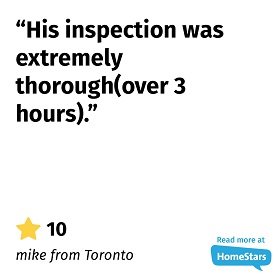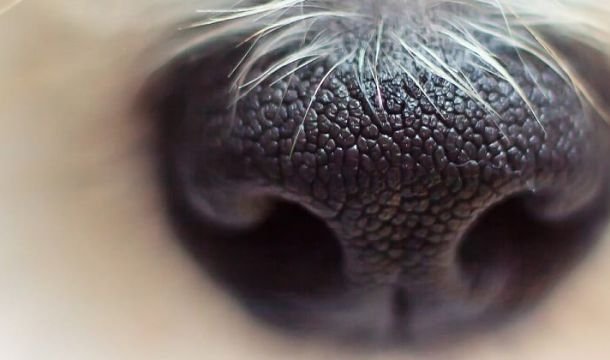Detecting Bed Bugs: Visual Inspection
The bed bug control industry has a spectrum full of techniques for not only exterminating bed bugs, but also detecting bed bugs. Different detection methods can generally be grouped in to three categories:
- passive interceptors and active traps [Pest Solution Services provides this]
- visual inspections by entomologist [Pest Solution Services provides this]
- canine scent detection [Pest Solution Services does NOT provide this]
This new series of articles under the title Detecting Bed Bugs will consist of articles that dissect each of the categories above. This second article in the series analyzes bed bug visual inspections.
Visual Inspection
Classical and undisputed, the visual inspection technique is the most satisfactory, and claimed to be the most common[1], method to detect bed bug infestations. Usually performed by pest control professionals wielding years of experience, trained eyes, and powerful torches. Here at Pest Solution Services, all visual inspections are performed by a licensed pest exterminator who also happens to be an entomologist. Our visual inspection is praised by clients all across the GTA
Physical Manifestation
Visual inspection comes, in general, in only one form: bed bug control inspector. Any person with experience in bed bug control, bed bug behaviour, and bed bug life stages, can carry out a visual inspection. This involves such a person being at the location of suspected infestation and thoroughly checking all areas for signs of an infestation. This is very important, the more detailed the inspection, the more reliable the results.

Interestingly, out of all three categories of detetion methods (see preface) this one is the most excellent in communication with the homeowner. This is because it is the only detection method in which the main apparatus of detection is manifested as a human (as opposed to a plastic interceptor or scent detecting dog).
After this discussion of physical properties we turn our attention to more abstract properties using personal experience (more than 1000 bed bug inspections) and summarised statistical data and research cited throughout the text.
Detection Success Rate
Unsurprisingly, the success rates of visual inspections vary depending on the inspector. This is more obvious when we see that a study roughly concludes 53/101 accuracy[2], while another reports 72±3% accuracy[3] with only “cursory” visual inspections [5], (a total of 291 apartments inspected).
Therefore, detection success rate is proportional, to some extent, to the experience, knowledge, and training of the inspector.
Time Elapsed Until Detection
Mean times taken for a visual inspection to be performed by researchers are listed in different papers, and some also list accuracy. You can find reports of 16 minute, follow-up, visual inspections (mean average of 81 inspections) that managed to be useful[4].

Here at Pest Solution Services, our flagship bed bug visual inspections funnel in to two main groups:
Firstly, if initial hotspots do not have any evidence, inspections conclude in less than an hour. However, when bed bugs are found in the main, initial areas, hours are allocated to continue the inspection and determine the infestation level – this means upwards of an hour, reaching to two hours in some cases.
Classes of Evidence Detected
When detecting a bed bug infestation, you are looking for 6 evidences. The first three would be considered living and the last three are non-living:
- Adult bed bugs
- Any life-cycle stage excluding eggs and adults
- Eggs
- Exoskeleton
- Fecal matter
- Bites
Visual inspections are the most comprehensive detection method in the sense that visual inspections detect all 6 classes of evidence – something other detection methods cannot do by themselves.

The beauty of this is appreciated when an inspector physically takes and shows the client the evidence that is found on the spot. Something, not found in canine detection, and only found in a limited way with interceptors.
Reliability (False Negatives/Positives)
Visual inspections are the furthest removed from concluding false positives out of all the detection methods. An honest and trustworthy inspector never concludes that an extermination must take place if no evidence was found to begin with! Always ask your inspector to show you the evidence that justifies the treatment plan.
As for false negatives, then this may occur with an inspector that was not thourough enough and missed evidence, leading to a false negative.
Quality, Costs, and Maintenance
Costs of a bed bug inspection are directly proportional to the quality of the bed bug inspector to a certain cap on the price. Some companies may offer a inspection package that includes many perks along with the inspection.

For example, Pest Solution Services offers the following perks with each inspection: discrete service (unmarked vehicles), supportive education, and question answering along with the inspection and inspection findings/recommended steps.
As for maintenance, then in this case that would mean hiring a company that follows industry practices such as licensing, proper gear. Otherwise, no maintenance is needed from the homeowners end other than navigating the house with the inspector. In fact, unlike interceptors, you can hire a bed bug inspection for vacation properties/shared properties and receive results on a regular basis – all without having to be present at the property.
Conclusions
Visual inspections provide instantaneous results about your bed bug problem, and with a good enough inspector you can usually get some extra services in the same visit. With a suitable inspector accuracy is high, and you should be able to physically see the evidence yourself. This is the best inspection method for those who have been startled and caught off-guard by a suspect infestation and want verification followed by extermination.
To conclude all of the above information, we can condense it in to pros and cons. The list below lists the pros and cons of bed bug visual inspections as a detection method, with each point taken from its respective place in the above discussion. Citations in this summarised list are omitted and should be found in the above paragraphs, if needed.
- PRO: Human manifestation of a bed bug inspector allows excellent communication and inspection experience for homeowner.
- PRO: Instantaneous inspection results; conclusions follow immediately after the inspection which can take, at most, a few hours .
- PRO: All 6 classes of evidence can be detected and even displayed to the homeowner for conviction.
- PRO: Bed bug inspector visits can come with extra perks: education on prevention, unmarked vehicles, question answering.
- PRO: Little to none maintenance needed from homeowners.
- CON: Accuracy and reliability depends upon the company hired; need to hunt down reputable bed bug control expert.
- CON: Costs vary depending on quality and so, homeowners need to do research.
References
- [1] S. L. Doggett, D. M. Miller, C.-Y. Lee, and D. Miller, Advances in the Biology and Management of Modern Bed Bugs. Newark: John Wiley & Sons, Incorporated, 2018, pp. 241.
- [2]C. Wang, K. Saltzmann, E. Chin, G. W. Bennett, and T. Gibb, “Characteristics of Cimex lectularius (Hemiptera: Cimicidae), Infestation and Dispersal in a High-Rise Apartment Building,” Journal of economic entomology, vol. 103, no. 1, pp.172-177, 2010, doi: 10.1603/EC09230.
- [3]C. Wang, N. Singh, C. Zha, and R. Cooper, “Bed Bugs: Prevalence in Low-Income Communities, Resident’s Reactions, and Implementation of a Low-Cost Inspection Protocol,” Journal of medical entomology, vol. 53, no. 3, pp. 639-646, 2016, doi: 10.1093/jme/tjw018.
- [4] R. A. Cooper, C. Wang, and N. Singh, “Evaluation of a model community-wide bed bug management program in affordable housing,” Pest management science, vol. 72, no. 1, pp. 45-56, 2016, doi: 10.1002/ps.3982.
- [5] S. L. Doggett, D. M. Miller, C.-Y. Lee, and D. Miller, Advances in the Biology and Management of Modern Bed Bugs. Newark: John Wiley & Sons, Incorporated, 2018, pp. 250.


